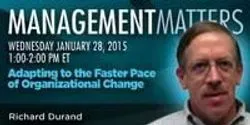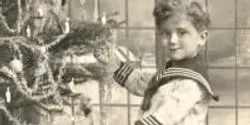Lab Leadership

America’s youngest scientists, increasingly losing research dollars, are leaving the academic biomedical workforce, a brain drain that poses grave risks for the future of science, according to an article published this week by Johns Hopkins University President Ronald J. Daniels.

Organization change in the lab has the need for flexible models that allow rapid redirection of workflow and operational practices. Some examples of responses that were developed to meet these more frequent challenges as well as to manage the overall change process will be shared.
Available on Demand
A study involving the University of Iowa finds crows join humans, apes, and monkeys in exhibiting advanced relational thinking.

Domination and submission, survival of the fittest, constant adaption to change - the wilderness and the corporate world have many similarities. The more detailed the look into each world, its routines, rules and ways of communication, the more obvious it becomes how beneficial it would be if the corporate world could learn from nature. In some areas, such as product engineering it is already happening, but in the area of personal development of leadership and teamwork skills this opportunity is still sadly missed.

The inaugural MicroTAS Video Competition, run by microfluidics specialist Dolomite and Lab on a Chip, and supported by the Chemical and Biological Microsystems Society, saw first prize awarded to an enterprising – and highly creative – entry submitted by Tijmen Hageman from the Korean Institute of Science and Technology (KIST) Europe GmbH in collaboration with the Unviersity of Twente.

How is the shiny tinsel that decorates many Christmas trees made? Today it's mostly made of plastic. But did you know tinsel used to contain chemical elements like lead, aluminum, or copper? Find out all about tinsel's chemistry history in this very special holiday episode of Speaking of Chemistry.















